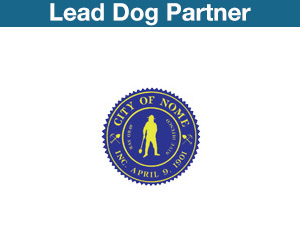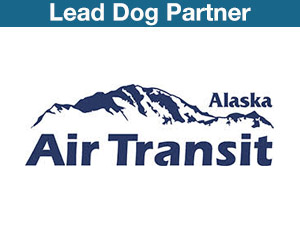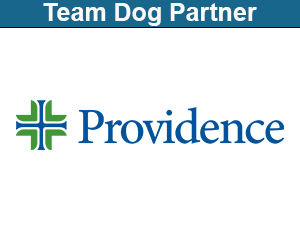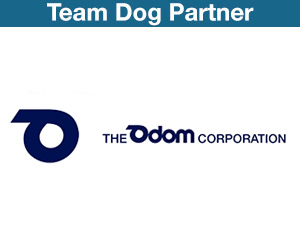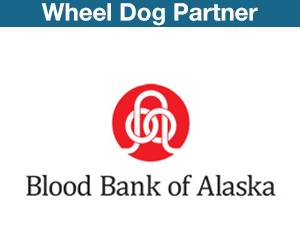Two busy departments during the race are in side by side rooms on the 4th floor of Race Headquarters at the Millennium Alaskan Hotel. These two departments work together to bring race information from the checkpoints to race fans around the world.
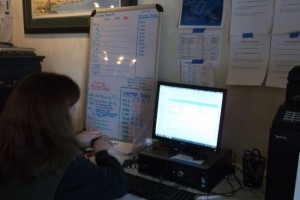 COMMS is ‘Communications Central’ for the race. It is the department that sends and receives important communications from the trail. Not only is race data relayed to and from checkpoints, but other important information that volunteers and staff need to know is communicated from Anchorage to Nome by COMMS volunteers. Andi Malard is Race Communications Coordinator and heads up this department of about 130 volunteers.
COMMS is ‘Communications Central’ for the race. It is the department that sends and receives important communications from the trail. Not only is race data relayed to and from checkpoints, but other important information that volunteers and staff need to know is communicated from Anchorage to Nome by COMMS volunteers. Andi Malard is Race Communications Coordinator and heads up this department of about 130 volunteers.
Most of the COMMS volunteers use the Internet to send information to Anchorage from the checkpoints but other tools are sometimes necessary. As an example, satellite phone is an important tool used in several checkpoints. Anchorage COMMS begins operations before the start of the race and closes after the last volunteers are off the trail and back in Anchorage.
Race Stats is the department that receives the musher status updates from the checkpoints and inputs the data into a specially designed database program and updates the Internet Current Standings. Race fans know the ‘Official Current Standings’ throughout the race thanks to the teamwork between these volunteers. Race Stats is staffed 24 – 7 from the time the first mushers arrive in Yentna until the last musher reaches Nome and must be ready to immediately update information sent from the checkpoints. This year about 50 volunteers work in Race Stats under the watchful eye of Race Stats Coordinator, Colleen Easley.
The GPS Tracker provides a clear image of each musher’s positioning during the race. GPS is updated every 10 minutes. Race fans who purchase GPS Tracker are able to ‘see’ where each musher is and are able to get real time knowledge of how the race is progressing.
 The Race Stats staff can only update the Current Standings when they receive official data from the checkpoints. They can monitor the GPS Trackers, but since Tracker does not give exact arrival or departure times or how many dogs are in a musher’s team, they cannot pull official data from it. It is, however; occasionally used as a research tool to clarify data received from the trail. As a result, the official standings and the information from GPS Tracker will never match up exactly— except when mushers are resting in a checkpoint. Although it is our goal that Tracker and Current Standings relay similar data, the reality is that our official Standings will never completely match what you see on Tracker.
The Race Stats staff can only update the Current Standings when they receive official data from the checkpoints. They can monitor the GPS Trackers, but since Tracker does not give exact arrival or departure times or how many dogs are in a musher’s team, they cannot pull official data from it. It is, however; occasionally used as a research tool to clarify data received from the trail. As a result, the official standings and the information from GPS Tracker will never match up exactly— except when mushers are resting in a checkpoint. Although it is our goal that Tracker and Current Standings relay similar data, the reality is that our official Standings will never completely match what you see on Tracker.
When email arrives in the race stats room, volunteers immediately set about entering the data into the database and updating the website. Unlike past years, once this data is added the race stats are updated and listed on the Current Standings page and immediately known to the world! In previous years, it would take anywhere from 15 minutes to an hour before the data would go live.
The process of sending race stats to Anchorage isn’t as simple as it sounds. Generally, two COMMS volunteers are sent to each checkpoint. The decision to send more COMMS volunteers to a few checkpoints is made depending on the operational situation of each checkpoint. Bottom line, these volunteers must be available to work 24 hours a day. GPS Tracker, if available in the checkpoint and email they receive helps keep the COMMS volunteers updated on expected arrival of mushers, another improvement over the past race years.
The set up of each checkpoint is different. In some locations, the COMMS volunteers pitch in to help park teams while in other checkpoints COMMS volunteers can stay in the checkpoint building or tent and wait for other volunteers to deliver the information to them. Depending on the distance a COMMS person must walk from where the musher checks in to where the information is entered into the computer musher/dog data is emailed as quickly as possible. That distance could be up to a half mile and although some checkpoints use walkie talkies, batteries don’t always work well in temperatures well below zero. Other factors such as Internet issues, the solar flares, how well the Satellite phones are working, the number of teams in a checkpoint at one time, or waiting to get dog count information from the checker or veterinarians play a role in how fast information is gathered and email travels from the checkpoint back to Race Stats. Add to the fact that mushers are not required to sign out of checkpoints unless they have completed an 8 or 24 hour lay-over and that some mushers like to ‘sneak’ out in the middle of the night as a race strategy, keeping up with the mushers and sending race information back to Anchorage is a big job!
When COMMS volunteers return from the checkpoint they were working, they hold a debrief with Andi in COMMS. Their evaluation of how things worked plus information from Race Stats, is woven together to improve race communications for the following year.
Bottom line, our hats are off to COMMS and RACE STATS volunteers who work 24 – 7 to bring the race to the fans and families of mushers! Well done, volunteers! Well done!
By Diane Johnson







